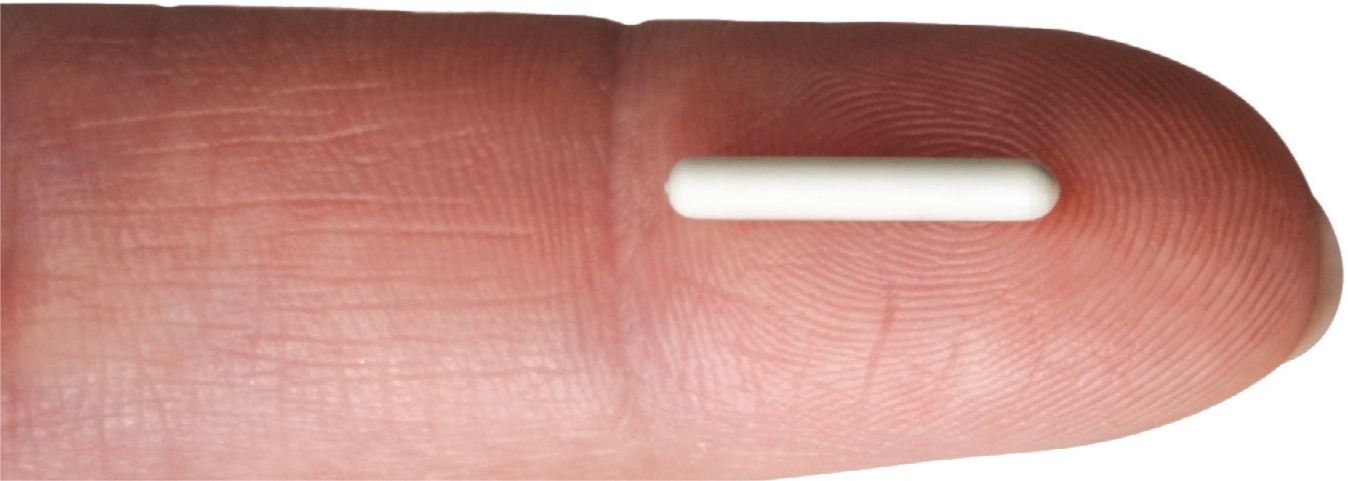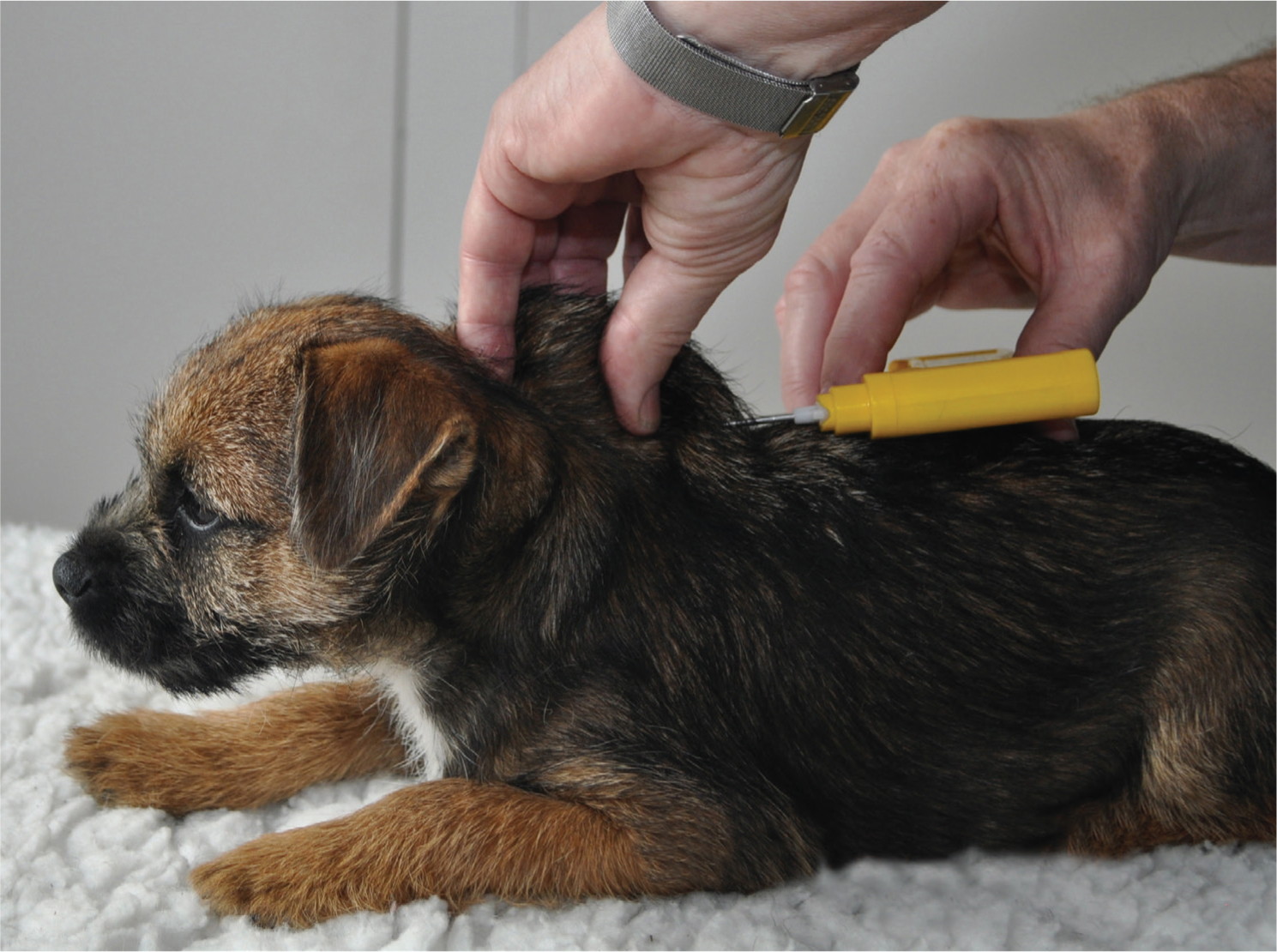Microchipping was first introduced in the UK in 1989 and is internationally recognised as a permanent method of identification and traceability of pets.
Following the introduction of microchips in the UK, in the early 1990s a group of veterinary bodies, microchip suppliers and animal charities joined together, to regulate the microchip industry; it was known then as the Microchip Advisory Group (before changing to the Microchip Trade Association (MTA)) and chaired by the BSAVA.
Around the same time, the FECAVA standard for microchips was introduced in the UK to discuss the compatibility and technical issues as microchipping developed throughout the UK and Europe. The main issues were developing and coordinating databases, standardisation of implantation sites and non-compatibility of the early microchips and readers and helping to get the Federation of European Companion Animal Veterinary Associations (FECAVA) standard in place. It also became a focal point to advise welfare and veterinary organisations so a code of conduct to establish and maintain a high standard of excellence within the industry covering equipment, databases and training was developed.
Between 1996 and 1997 the International Standards Organisation (ISO) introduced the ISO 11784 - 11785 standard to bring a universal microchip to animal identification which was adopted in the UK.
The welfare organisations and veterinary bodies became the Microchipping Alliance in 2009. The Kennel Club, as part of the Microchipping Alliance, campaigned to make permanent identification compulsory for dogs as the best means of reunification should a dog go missing.
How legislation has progressed
Following lobbying from the Microchipping Alliance and other organisations and stakeholder groups, the Department for Environment, Food and Rural Affairs (Defra) ran a consultation from 23th April 2012 to 15th June 2012. Defra sought views on a proposed package of measures aimed at tackling irresponsible ownership of dogs. The main proposals included compulsory microchipping of dogs; extending the criminal offence of allowing a dog to be dangerously out of control to private property; and removing the need to seize and kennel all dogs where court proceedings are pending, often for long periods of time.
More than 27 000 people responded to the consultation and Defra announced in February 2013 that microchipping would be made compulsory for all dogs in England.
All stakeholders have been working along-side Defra to ensure The Microchipping of Dogs Act 2015 was fit for purpose including ensuring an adverse reaction scheme was in place to monitor the reliability of microchips and developing training courses for implanters to ensure they were of the highest standard (The National Archives, 2015).
Wales and Scotland
The Scottish Government ran a consultation from 27th December 2013 to 31st March 2014 and the announcement was made on 4th March 2015 that microchipping was to be made compulsory.
The Welsh Government ran two consultations; the first from 16th May 2012 to 8th August 2012 and the second from March to May 2015. The Government announced on 23rd April 2013 that compulsory microchipping for dogs would be introduced.
Microchipping became compulsory in England, Scotland and Wales on 6th April 2016. Following the introduction of compulsory microchipping for dogs, veterinary practices and databases were inundated with dog owners looking to chip their dog and ensure their contact details were up-to-date, proving that despite the education campaigns from welfare organisations and databases alike, a high percentage of the 8.5 million dog owners in the UK had left it up until the law came into force to ensure they were compliant.
The owner of an unchipped dog will be given 21 days to comply and failure to do so may result in a fine of up to £500.
The microchip adverse event reporting scheme
True adverse reactions are very rare but can be broadly divided into three categories: implantation reactions, microchip migration and microchip failure.
Reports can be submitted online at www.vmd.defra.gov.uk. These are held confidentially and will not be divulged to any other party without permission.
Anyone can report an adverse reaction, however as some cases require more thorough veterinary investigation, it is recommended that a veterinary surgeon's contact information is included within the report. The Veterinary Medicines Directorate (VMD) will monitor all reports received to identify emerging issues and will feedback any concerns to the microchip manufacturer and MTA so that appropriate action can be taken.
‘Microchipping became compulsory in England, Scotland and Wales on 6th April, 2016….The owner of an unchipped dog will be given 21 days to comply and failure to do so may result in a fine of up to £500.’
Migration
In the UK, the implantation site for dogs, cats, rabbits and ferrets is in the mid line between the shoulder blades just under the skin. Implantation sites may vary in other countries. Although most microchips are covered with a special coating to promote tissue bonding (Figure 1), if they have been incorrectly implanted they may still move around the neck and onto the front of the shoulders or chest. In rare cases they may travel even further, so it is important to scan all over the body if the microchip is not identified between the shoulders. Most scanners must be held within a few centimetres of the microchip in order to work effectively.

Microchips should continue to work throughout the life of the animal, but, being electronic devices, very occasionally a microchip may just stop working. In order to confirm that this has happened the presence and location of the microchip should be confirmed by feeling it under the skin or with diagnostic imaging, such as x-rays or ultrasound. Before assuming a microchip has stopped working it is good practice to ensure the scanner is fully powered, working correctly and is compatible with the microchip in the animal, as some microchips used in other countries will not work with the scanners available in the UK.
Impact on implanters
The new legislation required a number of processes used by implanters including welfare organisations and veterinary surgeons to change. Therefore new services and data collection have had to be put in place to ensure that dog owners are complying with the law.
One of the key changes relates to training. From the 24 February 2015 anyone wishing to implant microchips in dogs may only do so if they are a veterinary surgeon or a veterinary nurse acting under the direction of a veterinary surgeon, they are a student of veterinary surgery or a student veterinary nurse, and in either case acting under the direction of a veterinary surgeon or they have been satisfactorily assessed on a training course approved by the Secretary of State so that they can implant micropchips (Figure 2). Lantra have developed a Level 3 Award in Performing Microchip Implementation in Animals, courses that meet the requirements of the regulations are currently being offered by Peddymark, the Microchip Trade Association, Micro-id and Smartchip (Micro ID train under the MTA and Smartchip train under Lantra).

Anyone implanting a microchip that is not any of those previously mentioned may receive a fine of up to level 2 on the standard scale (currently £500).
Update on legislation
In order to assess the effectiveness of the new law, it will take some time to gather statistics to assess if more dogs have been reunited and fewer dogs are being taken in by local authorities.
The Microchipping Alliance estimated that annual cost savings to local authorities relating to dog welfare alone could be between £20.8 million and £23.2 million from the first year of introducing legislation.
Companion animals
It is estimated that in 2015 12 million (46% of) households have pets according to Pet Food Manufacturer's Association's pet population survey (PFMA, 2015). The pet population currently stands at around 58 million.
It is already a requirement that all animals using the Pet Travel Scheme and all horses born after 1st July 2009 must be microchipped. In addition to this, certain species of exotic animals such as tortoises are required to be microchipped to comply with the Convention on International Trade in Endangered Species (CITES).
Microchipping any species other than those such as cats, dogs, rabbits and ferrets should only be carried out by a qualified veterinary surgeon.
Europe
Statistics from a report by the Kennel Club and the European Pet Network (EPN) from 2011 revealed that the percentage of companion animal's microchipped varies across Europe. The percentage of dogs microchipped was estimated to be around 10–25% with the exception of Austria which reported 40%.


